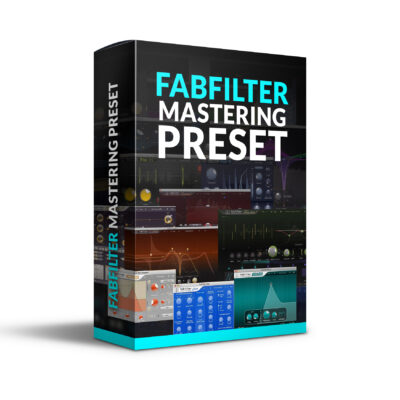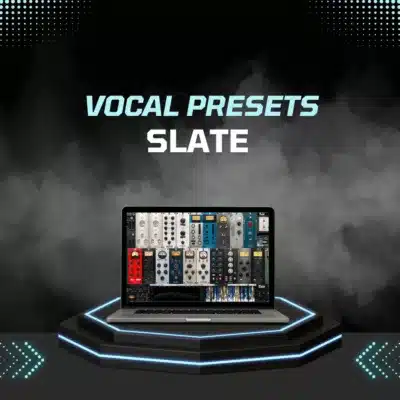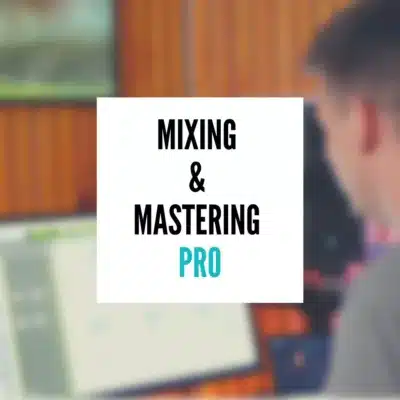Introduction: More Than Just Faders and Plugins
There’s a moment every artist experiences — they’ve written something real, maybe even beautiful, but when they press play, something’s missing. The emotion is there, but the sound? It feels flat. The kick doesn’t hit. The vocal doesn’t lift. The song doesn’t move you the way it did in your head.
That’s where mixing comes in.
At its core, music mixing is about shaping raw recordings into a coherent, professional sound that connects with listeners. It’s the invisible hand behind every great record — the process that turns creativity into clarity, vibe into energy, and rough sketches into release-ready art. Without a solid mix, even the best-written song risks being skipped in the first ten seconds.
As a mixing and mastering engineer who’s worked with artists across genres and continents — from bedroom pop to billboard-ready productions — I’ve seen firsthand how transformative this process can be. In this article, we’ll unpack what mixing actually involves, why it’s essential in today’s streaming-first landscape, and how understanding its value can change the way you make — and hear — music.
Let’s pull the curtain back.
What Is Music Mixing, Really?
To many, music mixing looks like a maze of faders, knobs, and plugin windows. But behind the interface lies something more fundamental: the art of balance, clarity, and emotional connection.
At its most basic, mixing is the process of blending individual recorded tracks into a finished stereo file. But that definition doesn’t do it justice. A great mix doesn’t just make things “sound better” — it enhances the emotional intent of the song, frames the vocal in its best light, and ensures every instrument has its place in the sonic picture.
Let’s break it down.
What Happens During a Mix?
If recording is where the performance gets captured, and mastering is where it gets finalized, mixing is where the music truly comes to life.
This is the stage where raw ideas are shaped into something intentional. Faders aren’t just being moved to balance levels — they’re being used to frame the emotional core of the track. EQ isn’t about “fixing” things — it’s about sculpting space, tone, and clarity. Every move, from subtle to bold, is about helping the listener hear and feel what matters most.
At the heart of mixing is a simple question: What should the listener focus on right now?
Should the vocal sit up front like a conversation in your ear? Should the snare crack through the mix to drive the groove? Should the reverb on that guitar swell to lift the chorus into another dimension?
Answering that means working with the tools — volume, EQ, compression, panning, reverb, automation — but more importantly, it means making musical decisions. You’re not just balancing sounds; you’re creating relationships between them. A kick that thumps isn’t enough unless it leaves room for the bass to growl. A lush synth pad might sound great soloed, but if it masks the vocal, it’s hurting the song.
Mixing is also where perspective matters most. After hours (or days) of writing and producing, it’s easy to lose sight of how everything fits together. That’s why an experienced mix engineer brings not just technical skill, but fresh ears — the ability to hear the track as a listener would, and then shape it accordingly.
It’s also where the energy of the track is fine-tuned. Compression helps reign in peaks and control dynamics, but it’s also how you shape groove and excitement. A vocal compressed just right stays present and emotive throughout the performance. A drum bus with parallel compression might be what gives your track its chest-thumping drive.
And of course, there’s the stereo image. One of the subtle arts of mixing is deciding where sounds live in the left-to-right field — and how that creates a sense of width and immersion. The result, when done right, is a mix that doesn’t just sound good — it feels spacious, intentional, and alive.
By the time a mix is finished, it shouldn’t feel like a collection of tracks anymore. It should feel like a complete record— something you can close your eyes and get lost in.
Why Mixing Is Crucial to Your Music’s Success
In a world where people make decisions about songs in seconds — and often through phone speakers or cheap earbuds — a great mix is no longer a luxury. It’s the difference between someone staying with your song and skipping to the next one.
And while it’s tempting to think of mixing as just the technical polish at the end of the process, the truth is: mixing is part of the music-making itself. It’s where emotion becomes audible. Where the groove gets its energy. Where the listener decides, almost subconsciously, whether they’re going to care about what you have to say.
I’ve had clients come to me with incredible songs — well-written, beautifully performed, even tastefully produced — but they weren’t getting traction. The vocal would get swallowed by the beat. The bass overwhelmed everything on smaller speakers. The mixes lacked that invisible thread of cohesion that holds a great record together. And the music was suffering for it.
When we went back in and gave those tracks the mix they deserved — where every element had its space, the vocal was front and center, and the whole thing moved with intention — things changed. Streams picked up. People responded. The artist felt confident again. And not because I waved some magic wand, but because the song was finally presented in a way that let it connect.
That’s what a mix does. It connects the dots between production and emotion. It makes the listener feel something — not just hear something.
It also gives your music a fighting chance in today’s ultra-competitive landscape. When you upload a track to Spotify, Apple Music, or YouTube, you’re not just competing with other independent artists — you’re sitting side by side with the biggest records in the world. The listener might not know what makes a mix professional, but they know when it doesn’t sound like what they’re used to hearing. And if it doesn’t measure up, they won’t wait around to figure out why.
Mixing is what bridges that gap. It’s how you bring your song up to a commercial level without losing the soul of it. And when it’s done well, no one notices it — they just feel it.
The Science Behind the Sound: What Makes a Mix Work?
When a mix hits you just right — when it feels wide, warm, punchy, and alive — it’s not just because of good gear or luck. It’s because the engineer behind it understands something deeper: how we perceive sound.
That’s what makes mixing so fascinating. It isn’t only about faders and frequencies. It’s about using subtle, intentional moves to guide the listener’s ear through a carefully crafted experience.
Take frequency balance, for example. Our ears are naturally more sensitive to the midrange — around 2 to 5 kHz — which happens to be the same zone where vocals, guitars, snares, and even harsh cymbals tend to fight for space. Without proper EQ and tonal shaping, that area can quickly become congested. The result? A mix that feels crowded, fatiguing, or just… off.
Then there’s frequency masking, a problem that plagues even well-recorded tracks. Two great-sounding parts — let’s say a warm vocal and a chunky rhythm guitar — can actually dull each other if they’re occupying the same space. It’s like trying to have two people talk at the same volume and pitch during a conversation. You don’t hear either one clearly.
That’s why so much of mixing is about decision-making: Who gets the spotlight in this moment? Who takes a step back? Am I shaping the song so the hook punches, or am I just stacking elements and hoping for the best?
There’s also the illusion of depth — that magical sense of front-to-back space that makes a mix feel immersive. Tools like reverb, delay, and stereo widening help you create this, but the real artistry lies in how you use them. Push the reverb too far and you lose clarity. Use it just right, and your vocal sits in a space that feels natural, intimate, and alive.
And of course, there’s loudness — the most misunderstood aspect of mixing. Everyone wants their song to be loud, but the truth is, loudness without dynamics is just noise with no movement. The best mixes feel loud because they’ve been crafted with contrast. They breathe. They punch. They lift when they need to and pull back when it matters.
That’s the secret: mixing is less about “sounding good” and more about feeling right. It’s a dance between science and instinct, data and taste. And the more you understand how people hear, the more intentional your mix decisions become.

Common Misconceptions About Mixing
Spend enough time in forums, YouTube comments, or studio group chats, and you’ll start to notice the same myths pop up again and again. And while they often come from well-meaning places, these ideas can seriously slow down your growth as a mixer or artist.
Let’s clear the air.
One of the most common misconceptions is the idea that “mixing can fix anything.” As if you can throw a poorly recorded vocal into a session, slap on a few plugins, and come out with something magical. The truth? A mix can only enhance what’s already there. If the raw ingredients aren’t solid — bad mic technique, blown-out levels, or a rushed performance — you’re mixing with one hand tied behind your back.
Another big one is the belief that “mixing and mastering are basically the same.” They’re not. Mixing is about shaping each individual track — vocals, drums, guitars, synths — into a balanced, emotional whole. Mastering is about taking that final stereo mix and preparing it for the outside world: tonal balance, loudness, playback consistency. It’s the polish, not the foundation.
Then there’s the over-reliance on presets. And don’t get me wrong — presets can be a great starting point, especially when you’re learning. But they’re not a substitute for critical listening. A vocal chain that works for one singer might fall apart on another. A drum preset might sound amazing until you hear it in context. Presets are like training wheels — useful, but the goal is always to ride without them.
And finally, there’s the idea that “mixing is all about having the right plugins.” That one might be the most damaging of all. Yes, great tools help — I use my fair share of top-tier plugins. But the real power comes from knowing why you’re reaching for an EQ or compressor, not just using one because a tutorial said it sounded “warm” or “analog.” Some of the best mixes I’ve ever heard were made with stock plugins and good taste.
What it all comes down to is this: mixing isn’t magic — it’s intentionality. It’s a series of thoughtful, context-based decisions designed to serve the song. And once you let go of the myths, the process becomes a lot more fun — and a lot more effective.
Do-It-Yourself vs. Hiring a Pro: When and Why It Matters
There’s never been a better time to make music on your own. The tools available today are powerful, affordable, and in many cases, incredibly intuitive. Plenty of artists mix their own tracks in bedrooms and home studios — and some of them do it really well.
But here’s the truth: just because you can mix your own music doesn’t always mean you should.
It comes down to what stage you’re at and what your goals are.
If you’re still in the early phases of learning production or just starting to release music, mixing your own tracks can be a valuable learning experience. You’ll get a feel for your voice, understand your arrangement choices more deeply, and start to develop critical listening skills that will serve you in every future project. It also gives you control — which is important when you’re still shaping your sound.
But as the stakes get higher — if you’re submitting to blogs, aiming for playlist placements, or prepping a project for release — the margin for error gets thinner. That’s where bringing in a professional can make a real difference. An experienced mix engineer brings not only technical precision, but fresh perspective. They haven’t heard the track 100 times already. They’re listening for emotional impact, technical issues, and how it all holds up against the competition.
I’ve had clients tell me that handing off the mix was like finally exhaling. They’d spent weeks tweaking the same snare or automation curve, only to realize that what they really needed was someone else to carry that final stretch across the finish line.
That doesn’t mean you have to choose one path forever. Some artists go back and forth — they might rough mix their own demos, then bring in a pro for the singles. Others work with an engineer early on to understand what a finished, release-ready mix feels like… and then use that as a benchmark when mixing future projects themselves.
The point is: there’s no shame in either path — but there is value in knowing which one makes the most sense for you right now.
If you’ve never worked with a pro, doing so once can be eye-opening. Not just because your song will sound better — though it likely will — but because you’ll hear what’s possible. And once you hear that, it’s hard to go back.
How to Know If Your Mix Is Working
One of the hardest parts of mixing — whether you’re doing it yourself or reviewing someone else’s work — is knowing when you’ve actually nailed it.
Because let’s be honest: after hours of looping the same eight bars, tweaking automation curves, and second-guessing every EQ move, your ears lose perspective. What once sounded punchy now feels flat. What once felt warm now seems muddy. You start questioning everything — and that’s completely normal.
So how do you know if a mix is really working?
The first and most important test is translation — does your mix hold up across multiple systems? Try it in your car. On cheap earbuds. Through your phone speaker. On studio monitors and a Bluetooth speaker. A great mix might not sound identical everywhere, but it should feel consistent. The vocal should always be clear. The bass should never vanish. The vibe should remain intact.
Another powerful tool is contrast — listening to your mix against a reference track in a similar genre. It’s not about copying someone else’s sound, but about understanding how your track stacks up sonically. Is your vocal as forward? Is your low end muddy or tight? Does your mix have the same sense of space and energy? Tools like ADPTR Metric AB or even a simple A/B in your DAW can be incredibly revealing.
Beyond technical comparison, trust your emotional response. When you press play, do you feel something? Does the mix support the message of the song? Are you getting chills during the hook? Or are you distracted by technical flaws — a harsh high end, a buried lead, a clashing reverb tail?
And finally, give yourself distance. Step away for a few hours — or a day if you can. Come back fresh. What stands out immediately? What doesn’t feel right anymore? That first listen after a break often tells you more than hours of late-night tweaking ever could.
The truth is, mixes aren’t perfect — they’re finished. The goal isn’t to chase some abstract ideal of perfection, but to reach a point where the song feels whole, emotionally resonant, and technically clean enough to survive out in the wild.
When it does that — you’ve done your job.
Final Thoughts: Mixing Is the Hidden Power Behind the Music You Love
Scroll through any streaming playlist, and what you’re really hearing — aside from the songwriting and production — is the result of thousands of tiny mix decisions working together in harmony. The depth you feel in a Frank Ocean vocal, the slam of a Billie Eilish kick, the gloss on a Dua Lipa hook… those aren’t accidents. They’re the result of intentional, often invisible, mixing choices.
Mixing is the bridge between creative intent and listener experience.
It’s what helps a song hit — emotionally, sonically, and commercially. And whether you’re doing it yourself, collaborating with an engineer, or still learning to trust your ears, understanding the role of mixing changes how you make music.
It’s not just about loudness or polish. It’s about connection — making sure your ideas aren’t just heard, but felt. That’s why great mixing doesn’t draw attention to itself. It doesn’t scream, “Look how clean this vocal is,” or “Check out this stereo image.” It just makes the song work. Effortlessly. Impactfully. Completely.
If you’ve never experienced that level of clarity and depth in your own music, maybe now’s the time. Whether that means dialing in your own mix with fresh ears — or bringing someone on board to help — the right support can change everything.
I offer professional online mixing and mastering services for artists and producers who want their music to compete at a professional level without losing the essence of what makes it unique. Whether you’re polishing your next single or prepping an entire project for release, I’m here to help make sure your music translates — everywhere it matters.
If you’re ready to hear what your song sounds like at its full potential, get in touch here
Let the music shine. Let it speak. And give it the best possible chance to be heard — the way you intended.






